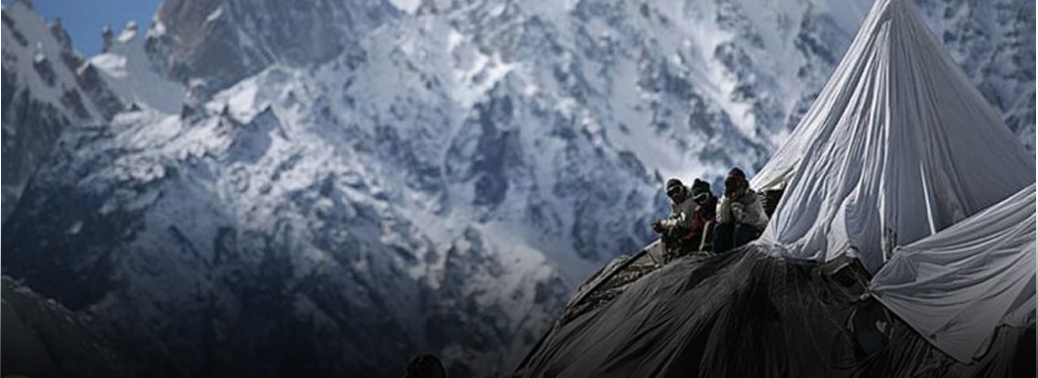Arihant – Nuclear Triad
11, Nov 2018

Prelims level : INS Arihant, India’s nuclear triad
Mains level : India’s nuclear triad Shortcomings and its near advancement
Why in News?
- India achieved a significant milestone in its strategic nuclear posture when it announced the completion of its survivable nuclear triad by adding maritime strike capability to land and air-based delivery platforms for nuclear weapons
- With the country’s first nuclear ballistic missile submarine, INS Arihant, completing its maiden “deterrence” patrol, India joined the select group of five — US, Russia, China, France and UK — which can boast of this capability
Importance of INS Arihant’s deterrence patrol:
- A deterrence patrol, as the term signifies, is meant to deter the adversary from conducting the first nuclear strike, as a nuclear ballistic missile submarine provides India with an assured second-strike capability.
- The success of INS Arihant gives a fitting response to those who indulge in nuclear blackmail.
- As a nation committed to “no first use” (NFU), it is of critical importance that an adversary contemplating a nuclear (first) strike should never be in doubt about the credibility of India’s nuclear deterrent and the assurance of a swift, devastating response.
- Given the kind of transparency provided by satellites and other technical means, the land-based legs of our nuclear triad (missile sites and air-bases) remain exposed to enemy attack.
- Once the submarine disappears underwater, it becomes virtually impossible to locate and can remain on patrol for months, with its ballistic missiles ready for launch on the PM’s orders.
- This is the kind of credibility that Arihant and other submarines will provide to India’s nuclear deterrence in the future.
Some shortcomings still present:
The issue of missile ranges:
- From a submarine patrol area in mid-Bay of Bengal, Islamabad is 2,500 km, while Beijing and Shanghai are over 4,000 km.
- Therefore, to target cities and nuclear forces deep inside China or Pakistan, from a “safe haven”, India needs a submarine-launched ballistic missile (SLBM) of 6,000-8,000-km range.
- The missile, reportedly, carried by the Arihant is the K-15, whose range falls below 1,000 km.
Lack of coordination:
- India has, so far, followed an unorthodox system, in which the National Command Authority (NCA) manages the nuclear deterrent through a “troika” consisting of the Strategic Forces Command (SFC), the Department of Atomic Energy and DRDO.
- While scientists are the custodians of nuclear warheads and help mate them with the SFC’s missiles and IAF fighter-bombers, the MoD and RakshaMantri remain out of the loop.
- Since Arihant and her sisters will carry “cannisterised” missiles, with pre-mated warheads, scientists have been eliminated from the chain, with custody and control of weapons devolving on the submarine’s captain.
- Although “fail-safe” electronic permissive action links (PAL) have been installed to ensure instant compliance with an authorised “launch” command from the NCA, while preventing accidental launch, structural and doctrinal changes are also urgently required.
Effective command and control structure:
- The Chairman Chiefs of Staff Committee (COSC) is, notionally, a key functionary in the nuclear command chain, responsible to the PM for the functioning of the SFC.
- With the operationalisation of Arihant, his role assumes greater criticality.
- Under existing rules, the appointment of chairman is tenable by the senior-most service chief who may (depending on his retirement date) serve for durations, varying from 30 days to 18 months.
- He discharges this duty on a part-time basis, in addition to running his own service.
- No other nuclear weapon state has such a farcical arrangement, and this impinges on the credibility of our deterrent.
- Given the gravity and magnitude of his responsibilities, in the context of the nuclear triad, the Chairman COSC, in his current avatar, needs to be urgently replaced either by a Chief of Defence Staff or a Permanent Chairman COSC, with an independent charter and a fixed tenure.
Need of more submarines:
- The nuclear-reactors of our SSBNs will need re-fuelling (with fresh Uranium rods) every few years.
- The process being a rather lengthy one, India would require an inventory of at least 3-4 SSBNs to maintain one on deterrent patrol off each seaboard.
- A small force of nuclear attack submarines (SSN) would be required for the protection of SSBNs and other roles.
- Thus, in a 50-60 year perspective, India should be looking at a nuclear submarine force of 8-12 SSBNs and SSNs.
- INS Arihant’s role in Make in India:
- Apart from its strategic significance, the Arihant is a live manifestation of PM Modi’s “make in India” vision.
- A number of major private-sector companies contributed to the Advanced Technology Vessel (ATV) programme by mastering esoteric technologies to design and fabricate systems for the vessel.
- This Navy-managed DRDO project has also spawned a huge country-wide indigenisation process by which small and medium industries, have contributed components manufactured to high precision and reliability specifications.
Way forward:
- India’s nuclear triad and its accessories are going to cost the nation trillions of rupees in the decades ahead.
- It would be delusionary to imagine that a large military, and nuclear weapons, just by themselves, can assure India’s security and bequeath “great power” status on it.
- A grand-strategic vision that integrates military power with a national security doctrine will certainly achieve both.






